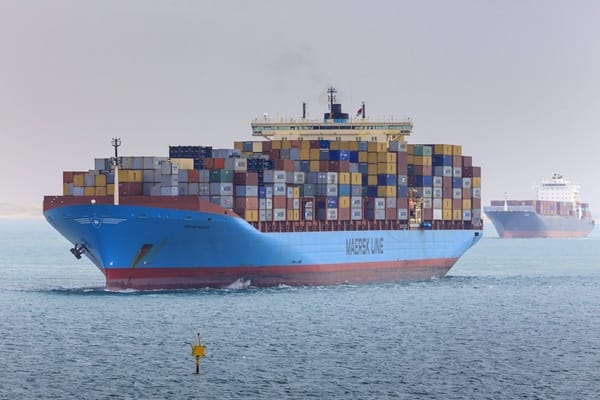Geopolitical risks are impacting the supplier strategy of many companies globally.
While the majority (63%) of the companies surveyed by Container Exchange in February, 24 are looking to diversify their supplier portfolio, 37% are still going to reduce the number of suppliers they aimed to diversify in 2021 amid the pandemic what caused repercussions.
Persistent geopolitical tensions in eastern Europe and the Middle East, have led to shifts in trade patterns, requiring industry players to redesign supplier mix for their supply chain.
A freight forwarder from the USA and a Container xChange customer said, “We are uncertain about who to partner with and who to discontinue our associations with.
“The situation is getting trickier for us as freight forwarders due to the ongoing war in the Middle East, leading to fewer partners in the east.
“The risks of sanctions and increased uncertainty are significant factors driving our need for trusted partners.”
The month of February 2024 marked a pivotal moment in the trajectory of container leasing and trading rates, which had been on the rise since past three months (starting November 2023), coinciding with the onset of the Red Sea crisis.
This inflection point closely aligned with our forecast from the preceding months, as Container xChange had anticipated a reduction in demand and subsequently a reduction in average container prices and leasing rates post Chinese New Year.
As the Chinese New Year holiday period concluded and business activities resumed, the rates failed to sustain their upward momentum.
On November 19, Iran-backed Houthi forces began attacking shipping vessels affiliated with Israel passing through the Red Sea. 102 days later, the shipping industry has emerged from this crisis better prepared than many had predicted.
As the industry typically responds to such crises, the initial impact was felt on rates. Freight rates immediately and persistently jumped as the world entered the last month of 2023.
This timing also coincided with the pre-Lunar New Year rush, which builds up in January and culminates in February.
Consequently, the freight rate boom continued well into 2024 as shippers aimed to deliver cargo for the cyclical demand, known as the pre-Chinese New Year rush.
Following the conclusion of the Chinese New Year on February 24, 2024, signs of fading demand and falling freight and container rates began to appear.
What lies ahead?
A continued decline in rates is expected, although not crashing. Freight rates typically fall by 30% every year from February to March and into April. Similarly, container rates are expected to fall by a measure of 18-6% depending on locations, with a higher percentage of decline expected in Asia.
Over the last 30 days (February 2024), container prices rose by 10% in Northeast Asia, 7% in Oceania, and 2.5% in Southeast Asia, remaining stable in North America. However, prices declined in Europe (5-7%), Japan and Korea (5%), and the Middle East and ISC region (2.4%).
A significant development is that the rates did not decline drastically in the last week of February (as seen in the table) compared to previous years. This can be attributed to the volatility caused by the Red Sea diversions and capacity being tied up in the market.
Supply Chain professionals hopeful of higher container prices in the coming weeks
While the cyclical forecasts indicate otherwise, Container xChange’s price sentiment index (xCPSI) indicates that the supply chain professionals remain positive about the container price hikes further into the month of March owing to the persistent red sea situation and its implications on supply chains.
While the xCPSI was in the negative territory throughout Q1’23, indicating a market sentiment where majority expected prices to continue slashing off the floor, the sentiment index reached an all-time high this February’24 owing to the Red Sea crisis and its perceived impact on container prices globally.
Christian Roeloffs, cofounder and CEO of Container xChange, an online container trading and leasing Platform said, “In the shipping industry, March is a transitional period following the Chinese New Year (CNY).
“Historically, CNY has led to a slowdown in manufacturing and shipping activity in China, which can cause a temporary decrease in demand for shipping services.
“However, as businesses resume operations after the holiday, there can be a surge in demand for shipping, particularly for goods that need to be restocked after the holiday period.”
“Additionally, March is often considered the beginning of the contract season for many shipping companies.
“This is when annual shipping contracts are negotiated and finalized for the upcoming year, which can influence shipping rates and capacity utilization in the industry.
While March can be a period of increased demand compared to the immediate post-CNY period, it is not considered as robust as other peak seasons like the pre-holiday period leading up to Christmas.”
He added, “Further into the year, rising inflation rates globally could potentially lead to higher production costs and increased consumer prices, thereby affecting trade volumes and container demand.
“As businesses grapple with inflationary pressures, they may need to reassess pricing strategies.”
“Consumer concerns regarding prices remain a key factor influencing purchasing decisions, with many consumers waiting for items to go on sale and stocking up on goods less frequently, impacting various product categories. The impact of above-average inflation, geopolitical risks, and uncertainty regarding interest rates is expected to continue influencing consumer goods markets in the near term,” said, Reoloffs.
“Additionally, monitoring global supply chain dynamics, including disruptions and changes in trade patterns, is crucial. These factors can significantly affect container trading and leasing rates on trade lanes, highlighting the importance of staying informed and agile in response to evolving market conditions.”

